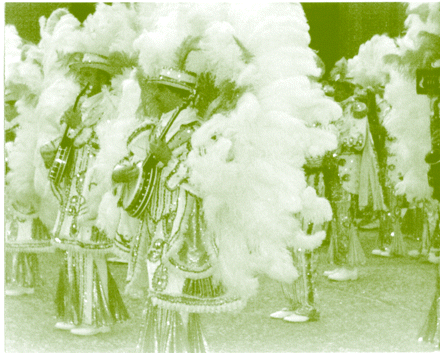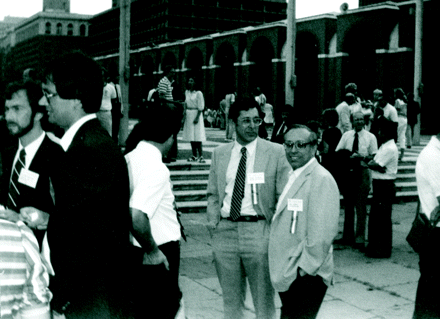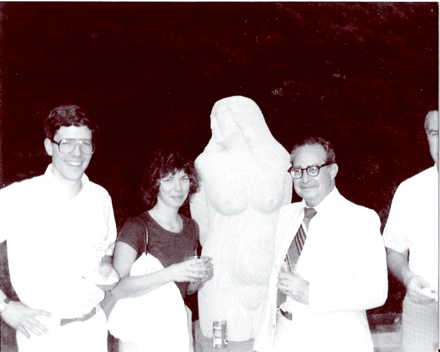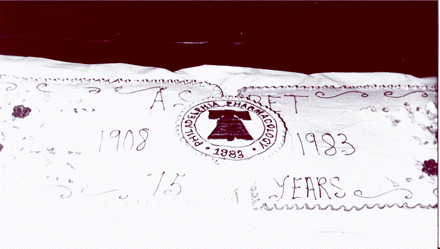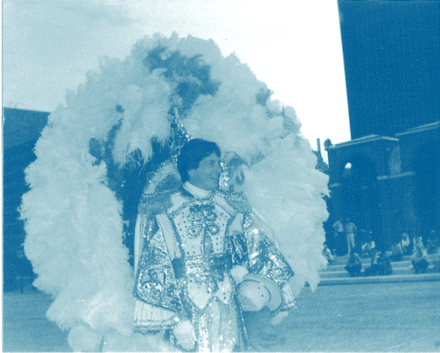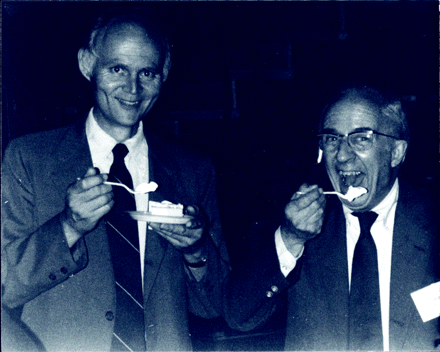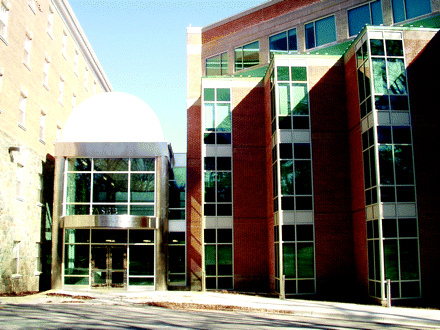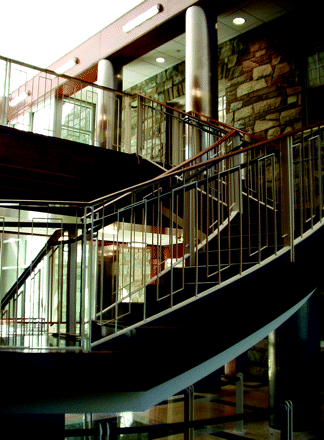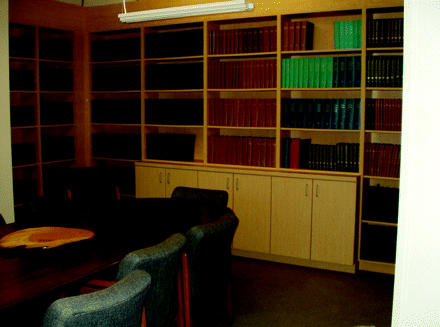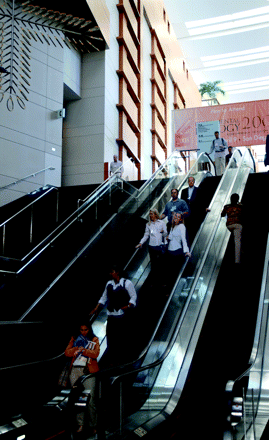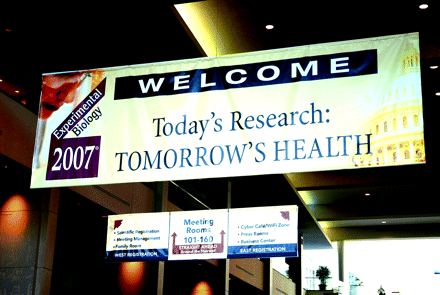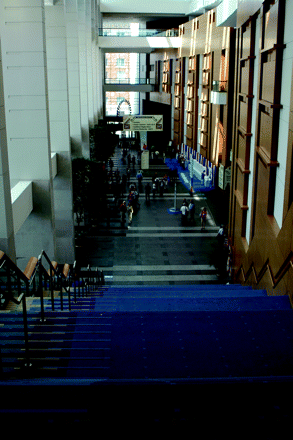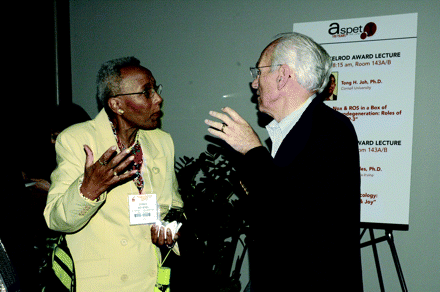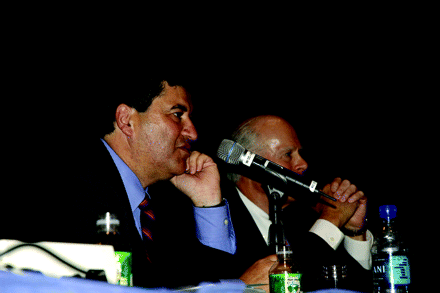A Brief History of ASPET on Its Centennial Anniversary
Abstract
On December 28, 1908, eighteen men met in the pharmacology lecture room of the Johns Hopkins University Medical School to establish the American Society for Pharmacology and Experimental Therapeutics (ASPET). In 2008, ASPET celebrates its Centennial, presenting an appropriate occasion for a look back at its history.
The Founding of ASPET
During the second half of the nineteenth century, pharmacology emerged as a distinct discipline within various countries, with the laboratory of Oswald Schmiedeberg at the University of Strassburg serving as a central training ground for the profession’s early practitioners. Among those Schmiedeberg-trained students was John Jacob Abel, who received an MD degree from Strassburg in 1888. After postdoctoral work in Europe, Abel was appointed, in 1891, to the first modern chair of pharmacology in the United States, at the University of Michigan (although the title of materia medica was initially retained for the position). Two years later he moved to Johns Hopkins University, where he remained, as the acknowledged “father of American pharmacology,” until his retirement in 1932.
Prior to ASPET’s founding in 1908, Abel had led the creation of the Journal of Biological Chemistry (1905) and the American Society of Biological Chemists [1906; now the American Society for Biochemistry and Molecular Biology (ASBMB)]. Even at the time that he was involved in these activities, however, he was already thinking ahead to the establishment of a similar organization and publication for pharmacology. In January of 1908, he expressed his aspirations to fellow pharmacologist Torald Sollmann:
It is high time that we started a society. Our subject is suddenly getting popular. Twenty years ago there was very little
interest taken in it.…Last year there were about ten places for pharmacologists, mostly associate Professorships, and no good
men or at least not enough for the places.
In December 1908, Abel sent an invitation to a select group of individuals to attend a meeting to organize a national pharmacological association. The meeting was to be held at Johns Hopkins, on December 28, to coincide with the annual meetings of the physiology and biochemistry societies. Of the eighteen men (no women) who attended that organizational meeting in Baltimore, eleven were employed by universities, five worked for the federal government, and two were based at a private research foundation, the Rockefeller Institute for Medical Research. One participant was Canadian; all others were American. Seventeen of the founders possessed MD degrees, and sixteen of them were also members of the American Physiological Society.
Not surprisingly, Abel was elected president of the new society. Two pharmacologists who had worked in Abel’s laboratory, Reid Hunt and Arthur Loevenhart, were named Secretary and Treasurer, respectively. Although the group wanted to call itself the American Pharmacological Society, the so-called American Pharmacologic Society had already been founded, in 1905, to promote “progress in pharmacologic science, and in the useful arts of pharmacy, pharmacognosy, pharmacodynamics and drug therapeutics.” Rather than representing the interests of professional pharmacologists, the American Pharmacologic Society had intended to raise revenues by carrying out scientific investigations for food and drug manufacturers, but it does not appear to have ever really gotten off the ground. In any case, Abel’s new Society was named the American Society for Pharmacology and Experimental Therapeutics. Experimental therapeutics was a term that had been popularized by the German scientist Paul Ehrlich, who developed Salvarsan, the landmark drug for the treatment of syphilis, in the early twentieth century. Ehrlich had criticized pharmacology for concentrating on the effect of drugs on healthy animals and had emphasized the need to produce diseases experimentally in animals on which to study the therapeutic effects of drugs. The phrase “experimental therapeutics” was almost certainly included in the name of the Society to emphasize the relationship of pharmacology to Ehrlich’s chemotherapeutic research.
Much of the early discussion concerning who should be admitted to membership in the Society centered on the question of how far to go in accepting clinicians involved in some kind of therapeutic research. On the one hand, there was a desire to attract respected clinicians who would enhance the prestige of the new organization. On the other hand, there was a concern that the organization might lose sight of its principal focus, experimental pharmacology. A similar question was raised about admitting scientists from related fields, such as bacteriology and immunology, who had only a peripheral interest in pharmacology. Clearly, the founding members of the new Society were struggling to shape their identity.
In all, thirty-four members were elected to the Society in 1909, and these were considered charter members along with the eighteen original founders. There were no women among the charter members. Less than half of the new group could be classified as pharmacologists. The others, by and large, were prominent clinicians and bacteriologists. Although the founders of the Society clearly wished to represent pharmacology as a distinct discipline, they were obviously also motivated by a desire to expand their size to a respectable level and to include distinguished individuals whose membership, even if they were not pharmacologists, would reflect credit on the organization. In 1909, the number of pharmacologists in the United States was still relatively small.
A requirement of membership was that the individual must have published “a meritorious investigation in pharmacology or experimental therapeutics,” and must also be “actively engaged in research in these fields.” The fields of pharmacology and experimental therapeutics were broadly interpreted in the admission of some members, although membership was limited to those who had at least made some kind of published research contribution.
There was one group of pharmacologists, however, that was specifically excluded from membership in the Society at its founding, namely, employees of the pharmaceutical industry. Although there were few pharmacologists in industry at the time, the Society’s council took this action “in order to avoid every external influence inimical to the scientific interests of pharmacology.” It must be remembered that at the time the drug industry did not have the prestige that it later acquired. Relatively little research was being carried out by pharmaceutical companies at the time, and proprietary manufacturers were flooding the market with thousands of dubious “patent medicines” intended for self-medication.
Pharmacologists may have been more sensitive about commercial influences on their work than their colleagues in fields such as chemistry and physiology, whose professional societies had no prohibition against industry scientists. It was, after all, the work of the pharmacologist that would ultimately determine at the experimental level the therapeutic potential and toxicity of a new drug. Academic pharmacologists were concerned at the time that their industrial colleagues might be subject to pressure from their employers to emphasize positive and downplay negative results. Fears were also expressed that industrial pharmacologists might use the forum provided by the Society’s annual meeting to extol the virtues of the products produced by their employers. The relatively young science was also struggling to establish itself as a legitimate academic discipline in the United States and was determined to portray itself as a field concerned with basic research, rather than with the practical and applied problems that seemed to be the province of commercial firms. The question of the admission of industry pharmacologists was to plague the Society for the next three decades.
Following the organizational meeting in Baltimore, the Society convened for its first annual meeting in Boston in December 1909. A constitution was adopted and dues were set at one dollar per year. A total of twenty-five members were present at the Boston meeting, and the scientific program included eighteen papers and demonstrations.
In June 1909, the first issue of the Journal of Pharmacology and Experimental Therapeutics (JPET) appeared. At first there was no formal relationship between the publication, established and edited by Abel, and the Society, but certainly the two were closely affiliated in the eyes of pharmacologists. The first volume of the new journal (1909–1910) contained twenty-four papers from academic institutions, six from government agencies, and three from the Rockefeller Institute for Medical Research, for a total of thirty-three published articles.
Thus, by the close of the first decade of the twentieth century, American pharmacologists had their own national society and journal, and the subject was firmly established at a significant number of the country’s reform-minded medical schools. Pharmacology was also on its way to becoming “professionalized” in government and industrial laboratories. ASPET would contribute further to that professionalization process over the next century.
The 1910s
One of the major developments during the first decade of the Society’s existence was the creation of the Federation of American Societies for Experimental Biology (FASEB). On December 31, 1912, during the fourth annual meeting of the Society in Cleveland, representatives of ASPET, the American Physiological Society, and the American Society of Biological Chemists met to discuss the possibility of forming a federation. The group unanimously recommended the establishment of a federation of the three societies, to be called the Federation of Societies for Experimental Biology. It was also agreed that the presidents and secretaries of the constituent societies should form the Executive Committee of FASEB and that the chairmanship of the Executive Committee would be held in turn by the presidents of the respective societies; the secretaries of the three societies were charged to consult in programming the annual FASEB meeting.
In 1915, ASPET found itself in the uncomfortable position of having to remove a member. Charges were filed with the Society’s membership committee alleging that Silas P. Beebe, of New York, had forfeited his membership, according to the Society’s constitution, “by knowingly publishing false statements on a scientific subject, or by other actions incompatible with the aims of the Society or with the standing of a scientist.” Beebe taught experimental therapeutics at Cornell University Medical College, where he had received his MD degree in 1909, one year before he joined ASPET. He was accused of exploitation of a supposed cancer remedy called the “Horowitz-Beebe Autolysin.” After weighing the evidence assembled by the Membership Committee, the council of ASPET concluded in 1915 that Beebe had indeed forfeited his membership. On a more positive note that same year, ASPET apparently elected its first woman to membership, physician-pathologist Louise Pearce. She had a medical degree from Johns Hopkins University and was affiliated with the Rockefeller Institute for Medical Research, where she worked with Simon Flexner on research leading to the development of tryparsamide, a drug for the treatment of African sleeping sickness.
In 1919, ASPET addressed a controversial bill introduced into the United States Senate to prohibit the use of dogs in experimentation. The Society drafted a set of resolutions outlining the importance of the use of dogs in medical research, pointing out that researchers used anesthesia and other methods to prevent suffering in experimentation, and giving other reasons why such a bill should be opposed. Copies of the resolutions were sent to the Senate Judiciary Committee, to which the bill was referred, and to a number of other Senators as well. ASPET collaborated with other national scientific societies in opposing this bill, which apparently never made it out of committee.
The Society also experienced ups and downs in the wake of the First World War. Although the War ended with the signing of the Armistice on November 11, 1918, it proved too difficult for the FASEB societies to secure a suitable meeting place in the post-Christmas period, so that no meeting was held in December of 1918. A make-up meeting, held in Baltimore in April of 1919, elicited the attendance of only twenty-three members. At the same time, some members of the Society began to reconsider their opposition to admitting industry pharmacologists to membership. In particular, Arthur Loevenhart of the University of Wisconsin, who would serve as ASPET president in 1919–1920, sought to delete the membership restriction from the constitution. By special request, however, and owing to limited attendance at both the April make-up meeting and the regular December convention of 1919, consideration of Loevenhart’s amendment was tabled, and a committee was appointed to present relevant information to members in advance of the 1920 meeting.
The 1920s
Loevenhart’s proposed amendment to eliminate the membership ban on industry pharmacologists came up for a vote at the 1920 annual meeting, and it was soundly defeated. The idea of admitting pharmacologists employed by the drug industry as a special category of associate members, to have all of the privileges of membership except the right to vote at business meetings, was also rejected. Due to a misunderstanding, Loevenhart had missed the business meeting, and so did not have an opportunity to defend his proposal in person. It is in any event doubtful that he would have been able to achieve the four-fifths vote necessary to amend the constitution.
In 1922, the Society experimented with its first meeting outside of the United States, in Toronto, Canada. Attendance was good, and a total of thirty-eight papers were presented. A second experiment, namely, to move the annual meeting to springtime, was outlined at the December 1925 meeting, and the following meeting, in April of 1927, set the ensuing pattern of spring meetings. On another international note, the Society joined with the other FASEB organizations to take an active part in organizing the XIIIth International Physiological Congress, the first to be hosted by the United States, in August of 1929, in Boston. The annual meeting of ASPET and the other FASEB societies that year was held in conjunction with the International Congress. ASPET further acknowledged its position within the international context of pharmacology by conferring Honorary Membership, a member category just created in 1927, for the first time, in 1928, upon four noted European pharmacologists: Henry Dale, Rudolf Magnus, Hans Meyer, and Walther Straub. ASPET’s growing importance within the American biomedical community was evident, in 1926, upon the fiftieth anniversary of the founding of Johns Hopkins University. In honor of the occasion, Abel’s colleagues, friends, and pupils dedicated the year’s volume of JPET (vol 29) to Abel, which included forty contributions from eminent American and European scientists.
The 1930s
As the 1930s opened, a number of amendments to the ASPET constitution were proposed and adopted. The most significant of these changes were the addition of the position of vice president and the creation of a nominating committee.
At the 1933 annual meeting, in Cincinnati, a special session was called to discuss the transfer of JPET to ASPET. Up to that time, the journal was owned by a private corporation established by John Abel, who edited the publication until 1932, when he was succeeded by E.K. Marshall, Jr. Although Abel provided space in the pages of the journal for the abstracts of papers presented at the Society’s meetings, there was no official connection between JPET and ASPET. Some pharmacologists, however, believed that the journal should be recognized in some way as the official organ of the Society, to which neither Abel nor Marshall objected. With the publication contract with Williams and Wilkins about to expire in 1934, the Society sought ownership of the journal, but the special session in Cincinnati failed to establish satisfactory terms of transfer with Edward Passano, President of Williams and Wilkins. Passano, who had developed a good working relationship with Abel, expressed concern that the Society might eventually decide to act as its own publisher and exclude his company entirely. He believed that Williams and Wilkins deserved some equity in the publication for the company’s efforts and risks over the years, and he tried to negotiate an agreement whereby the Society would cover deficits and pay the company a percentage of receipts.
Passano returned to Baltimore without a contract. He rode back on the train with Abel, who had left the meeting early. During the trip, Abel convinced Passano to drop his demands, and a letter from Passano to that effect accompanied Abel as he took the very next train back to Cincinnati, arriving in time for the last business session of the Society’s meeting on April 12. The Society agreed to accept ownership of JPET and to establish a new contract with Williams and Wilkins. At the same time, the Society became formally incorporated as the American Society for Pharmacology and Experimental Therapeutics, Inc.
In 1936, the large number of papers on the scientific program prompted the Society to run two simultaneous sessions for the first time in its history. The simultaneous sessions proved so unpopular with meeting attendees, however, that a by-law was passed at the business meeting to empower the Society secretary to limit the number of programmed papers; the ASPET president and secretary were authorized to select the papers to be read. Papers not selected would appear on the program as “read by title.” Nevertheless, in 1937, D.R. Hooker inadvertently scheduled two simultaneous sessions for the FASEB program, but gracefully rearranged the program upon the Society’s request. Given the growth of the discipline and the Society, whose membership had reached 173 by 1936, the restriction on simultaneous sessions disappeared within a decade.
Although renewed efforts in the 1930s to eliminate the ban on industry pharmacologists were defeated, one point relevant to this issue was clarified during the decade. The number of academic pharmacologists who were consulting with industry had been steadily increasing, and some of these collaborations extended over long periods of time. The question arose as to whether the phrase in the Society’s constitution excluding from membership pharmacologists who were “in the permanent employ of a drug firm” applied to long-term consultation agreements. The matter seems to have come to a head when A.N. Richards of the University of Pennsylvania wrote to the ASPET council, on April 4, 1935, to explain that he had been acting as a paid consultant for Merck for the past three years. He stated that he felt obliged to bring this matter to the attention of the council because of the rule denying membership to those in the “permanent employ” of a drug firm.
The council considered Richards’s letter at its 1935 meeting and agreed that the rule needed to be clarified with respect to consulting arrangements. It is difficult to imagine that any member of the council would have wished to expel such a distinguished pharmacologist as Richards. A special committee was established to study the issue, and in the meantime Richards was told that the arrangement he had with Merck did not violate the constitution. It was recognized by this time that quite a few members were consulting with industry.
The committee recommended altering the passage so as to read, “in the permanent employ of a drug firm other than in the capacity of consultant [emphasis added here]. At the same time, they suggested that the term “drug firm” be changed to “any organization concerned with the manufacture or sale of medicinal products.” Although the amendment did not receive the necessary four-fifths vote of members present to pass at the 1936 annual meeting, it was approved and went into effect the following year. Even so, some members expressed concern about the advisability of passing an amendment that would condone industrial consultation.
Although acceptance of industrial relationships was growing, there were still only eight women members in 1939, about 3% of the total membership, a percentage that was not to increase significantly until the 1970s. Among the women elected to membership in the 1930s was Gerty Cori, who went on to win the Nobel Prize in Physiology or Medicine in 1947.
The Society also considered establishing a review journal, Pharmacological Reviews, during the 1930s. At the 1935 annual meeting, the appointed committee delivered its report, in which it concluded that it was neither advisable nor feasible to establish such a publication at the time. The committee believed that there was “no apparent surplus” of material for such a publication, and that Physiological Reviews was serving pharmacologists sufficiently. The committee was also concerned that it would be difficult to make the journal a financial success. (It was not until 1949 that Pharmacological Reviews was finally inaugurated by the Society.)
As the decade drew to a close, the Society turned its attention to the place of pharmacology in medical school; a special committee to study the important matter was appointed after discussion at the 1937 meeting. The following year, the committee made its written report available to the membership at a special luncheon, at the annual convention, attended by 120 people. The Role of Pharmacology in the Medical Curriculum was still considered relevant enough in 1969 that it was reproduced in full in K.K. Chen’s history of ASPET. The report made recommendations concerning pharmacological teaching and research, and argued for the importance of independent departments of pharmacology staffed by trained pharmacologists.
The 1940s
As the 1940s began, a number of distinguished pharmacologists, such as K.K. Chen of Eli Lilly, were working for pharmaceutical firms, and the industry’s commitment to research was substantial. In November of 1940, twenty-four members of ASPET submitted yet another amendment to eliminate the ban on membership for industrial pharmacologists. On April 17, 1941, the seventy-two members present at the annual business meeting of ASPET unanimously approved the amendment, thereby deleting the restriction against industrial scientists and ending thirty-three years of this discriminatory policy.
With the bombing of Pearl Harbor on December 7, 1941, and the entry of the United States into the Second World War, the normal activities of ASPET, like those of many American institutions, were disrupted. Because of the war, no annual meeting was held in 1943, 1944, or 1945. Society business was carried out by mail and by two meetings of the council. Despite the annual meeting moratorium, abstracts of papers submitted during those years were published in Federation Proceedings.
In 1942, the council received an offer from K.K. Chen on behalf of the Eli Lilly Company to fund a prize named in honor of John J. Abel. The proposal was accepted by the council and approved by the membership at the first postwar annual meeting, in 1946, and the first John J. Abel Award was thus not awarded until 1947. The recipient was George Sayers of the University of Utah College of Medicine for his studies on the pituitary adrenal system. The Abel Award was the first formal award to be established by the Society, and it continues to be awarded to the present day. (See Table⇓.)
ASPET’s awards programs have brought great visibility to pharmacology.
FASEB was suffering from growing pains as its constituent societies expanded, and there apparently was even some talk of disbanding the organization in 1947. The crisis passed, however, and FASEB survived and prospered. At the 1947 annual meeting, ASPET, with 371 members, required three simultaneous sessions to present a total of eighty scientific papers. ASPET also added a second yearly meeting, scheduled in the fall, the first of which was held, in Indianapolis, in November 1949.
Also in 1947, a Temporary Board of Publications was appointed to re-consider, with new plans and financial arrangements, the establishment of a review journal. The Temporary Board accordingly recommended the establishment of a review journal within the framework of JPET, to become a separate publication when that seemed appropriate. They also made broader recommendations, suggesting the creation of a three-person Board of Publication Trustees, which was implemented through constitutional amendment at the 1948 annual meeting. The Board of Publication Trustees was charged with pursuing the possibility of the new review journal. What was to become volume 1 of Pharmacological Reviews was published as a supplement to JPET in 1949. It was enthusiastically received, and beginning with volume 2, in 1950, it was issued as a separate publication.
The 1950s
A decade after ASPET began accepting industrial pharmacologists as members, the Society elected its first president from industry, K.K. Chen of Eli Lilly and Company, who served for the 1952–1953 term. Chen, who had worked in Abel’s laboratory after obtaining his MD degree at Johns Hopkins, had gracefully resigned from the Society when he joined the drug firm in 1929, expressing “a desire to comply with the ethics of the Society and leave it in good standing.” Under the Society’s constitutional amendment of 1941, Chen was readmitted to membership in 1942.
At the 1953 International Physiological Congress, in Montreal, a group of pharmacologists met to discuss the formation of a temporary council for the purpose of developing a pharmacological section within the newly emerging International Union of Physiological Sciences. Seven pharmacologists were elected to the council, with Carl Schmidt representing the United States. The council was recognized by ASPET and by the International Union as “the interim effectuating agency of [sic] potential international Union of Pharmacologists.” The International Union of Pharmacology was not formally established, however, until 1959, when it was created as a section of the International Union of Physiological Sciences. It became independent in 1966 and is today known as the International Union of Basic and Clinic Pharmacology.
Racial issues clouded the Society’s 1956 meeting. At a relatively late date, the council decided to move the fall meeting from Louisville, Kentucky, where hotels followed a policy of racial segregation, to French Lick, Indiana. There was a lively discussion of the subject at the French Lick meeting, and members were generally in sympathy with the council’s change of venue, but some concern was expressed that “discourtesies has been tendered the Louisville members and school.” It was also pointed out that this policy would deny southern schools the benefit of hosting the Society’s fall meeting, and a question was raised as to whether the Society should limit its concern to integration at meeting sessions and official gatherings. It was also suggested that meetings be held on university campuses that could provide housing for all meeting attendees. A motion was passed expressing confidence in the council and requiring the council to “fully investigate all phases of an invitation before making any decision regarding future meeting places.” The minutes report these deliberations in some detail, but they carefully avoid making any specific reference to race.
In 1957, the Society celebrated the centennial of the birth of its founder, John J. Abel. The fall meeting that year was appropriately held in Baltimore. At a special session, former students and colleagues of Abel presented their reminiscences, and the talks were published in the Bulletin of the Johns Hopkins Hospital. The Welch Medical Library at Johns Hopkins also prepared an exhibit on Abel in connection with the centennial celebration.
The 1950s also witnessed the beginnings of the Society’s search for a centralized office and a paid executive. Only the first of these goals was realized before the end of the decade. When FASEB acquired the Beaumont House in Bethesda, Maryland, office facilities were made available to member societies. In 1958, the Society established an office at Beaumont House. In addition, a copy editor was hired, as part-time Secretary of Publications, to handle technical editing for the Society’s two journals. Discussions also began about how to raise the necessary funds to hire an executive officer, which led to a campaign, in the late 1950s, to raise the money from the pharmaceutical industry and made way for amendment of the by-laws, in 1960, to create the category of Corporate Associates. The minutes from a 1958 council meeting describe the type of executive that the Society might hire: “This man might be a young man with many years of service ahead of him or an older man, perhaps retired, and therefore needing little personal support (which might fit our present small budget).”
In 1959, there was considerable discussion at both the council and business meetings about a possible change of name for the Society. Suggestions for a new name included American Society for Pharmacology (or Pharmacologists) and American Pharmacological Society. Several members, however, spoke in favor of keeping the words “Experimental Therapeutics” in the name to convey medical connotations, to prevent people from confusing pharmacology with pharmacy, to help make the Society more appealing to clinicians, and to preserve tradition. It was also anticipated that a change in Society name would require a name change for JPET. The matter was not settled until the 1960s.
As the decade drew to a close, the Society added a new publication to its roster, largely at the initiative of Chauncey Leake and in spite of membership support that was “less than enthusiastic.” The first issue of The Pharmacologist, prepared by Leake, appeared in the spring of 1959 with the following statement of purpose:
The function of The Pharmacologist is to give helpful, non-technical information to people who are interested in pharmacology & toxicology. This is part of
the current effort to meet growing needs for better communication between scientists as their numbers increase, and as opportunities
for personal contacts tend to decrease in the busy rush of affairs.
The 1960s
As the new decade dawned, the Society had still not resolved the issue of a proposed name change. Those who wanted to shorten the name to American Society for Pharmacology argued that the current name was too long, redundant (as experimental therapeutics is a part of pharmacology), and excessively glamorized experimental therapeutics (as it is only one branch of pharmacology). Moreover, John Abel reportedly had favored this shorter name. Those who favored keeping the original name argued that the long name did not create any problems, that experimental therapeutics made pharmacology in part uniquely different from biochemistry and physiology, and that a name change might encourage splinter groups to leave the Society and promote experimental therapeutics elsewhere. At the spring 1960 meeting, 78% of those in attendance voted for the change in name, just short of the four-fifths vote needed to amend the constitution. The issue was considered again at the April 1961 business meeting, when Eugene Geiling contradicted the view that Abel had favored naming the Society ASPET only to avoid confusion with an existing pharmaceutical society. Geiling indicated that from evidence available to him, he believed that Abel felt that adding “Experimental Therapeutics” to the Society’s name was most appropriate. In any case, the proposed amendment was this time defeated by a vote of 144 to 141.
At the beginning of the 1960s, the Society determined that funds were available to hire an executive officer. A search committee was appointed to consider and interview candidates for the position. Ellsworth Cook, who had obtained his PhD in pharmacology from Tufts University Medical School in 1951, was selected for the job, effective upon his retirement as a Commander in the United States Navy on October 1, 1961. Cook was introduced to the membership at the annual meeting in April 1961, at which time he also became a member of the Society. The announcement of his appointment in the spring 1961 issue of The Pharmacologist noted:
As Executive Officer of the Society, he will be charged with the ongoing managerial affairs previously delegated particularly
to the Secretary and the Treasurer. The responsibilities of these officers of the Society will become henceforth more of a
supervisory or advisory nature.
Part of the reason that the Society was able to afford a paid executive was the result of increased financial support from the pharmaceutical industry and related commercial enterprises. Otto Krayer had organized a campaign in the late 1950s to explore the establishment of Corporate Associates. His inquiries to pharmaceutical firms were met with substantial interest and contributions, and in 1960, the Society’s constitution was amended to create the category of Corporate Associates. The published list of Corporate Associates in 1961 included sixty-five companies.
The beginning of this decade is also notable because the First International Pharmacological Meeting was held in Stockholm, Sweden, in August 1961. Some 1500 scientists, including about 300 from the United States, attended the meeting. It was so popular that two charter flights arranged by ASPET were oversubscribed. The meeting was described as an “outstanding success.”
Issues concerning animal experimentation, which have resurfaced throughout the history of the Society, drew the attention of ASPET in the 1960s when animal welfare advocates sought to pass an animal care law. Pharmacologists and other biomedical scientists were concerned that some of the bills being introduced were too restrictive. The Society formally endorsed the principles of humane care, but supported animal welfare legislation that would not hamper medical and biological research. In 1966, the Laboratory Animal Welfare Act was passed.
The thalidomide tragedy of the early 1960s brought concerns over drug regulation to a head. The Food and Drug Administration proposed new regulations in the Federal Register of August 10, 1962, and although the Society recognized the need to protect the public, ASPET expressed concern that “the proposed regulations will interfere unnecessarily with the activities of those pharmacologists who study drugs in people.” The ASPET council resolved to request the FDA to postpone regulatory changes until a Society representative could meet with the FDA Commissioner to voice concerns over potential handicaps to clinical drug research and the need to ensure investigator freedom. In October, 1962, the law referred to as the Kefauver-Harris amendments to the Food, Drug, and Cosmetic Act was enacted by Congress.
The increasing interest by pharmacologists in investigating the use of drugs in humans is reflected in discussions at ASPET meetings. In 1963, the council, responding to the perceived needs of clinical pharmacologists (especially in light of the newly enacted drug regulations), approved the establishment of the Committee on Clinical Pharmacology. By the end of the decade, the Committee had evolved into the Division of Clinical Pharmacology. In 1967, the Society became a cosponsor, with the American Therapeutic Society, of Clinical Pharmacology and Therapeutics. At the same time, the Society launched a new journal, Pharmacology for Physicians (later renamed Rational Drug Therapy), aimed at providing what it saw as an important need in medical education, the provision of sound pharmacological discussion of drugs important to practitioners.
If some pharmacologists in the 1960s were turning their attention to the effects of drugs on the complex human organism as a whole, others were captivated by the new era of molecular biology, ushered in by Watson and Crick’s 1953 paper on the double helix structure of DNA. A number of pharmacologists argued that the field must embrace the molecular domain in order to remain on the cutting edge of science, and in 1965 the Society launched a new journal in this direction, Molecular Pharmacology. The statement of purpose of the new journal noted that it would “publish the results of investigations that elucidate mechanisms of drug action or of toxicity at the molecular level,” interpreting the term “drug” broadly “to include any chemical agent that selectively modifies biologic function.”
During the 1960s, the Society was also involved in the discipline’s efforts to establish itself more independently at the international level. In the middle of the decade, the Section on Pharmacology of the International Union of the Physiological Sciences (IUPS) applied for admission to the International Council of Scientific Unions (ICSU) as an independent International Pharmacological Union. The application was denied on the grounds that the organization was not an independent union, but a section of the IUPS. The ASPET representatives involved in the negotiations expressed concern that the Executive Committee of IUPS, in communicating with the ICSU, had not adequately acknowledged the efforts of the Section on Pharmacology. The pharmacologists thus decided to leave IUPS and form their own independent International Union of Pharmacology (IUPHAR; now International Union of Basic and Clinical Pharmacology) in 1966.
At the end of the decade, ASPET published The American Society for Pharmacology and Experimental Therapeutics: The First Sixty Years, 1908–1969, edited by K.K. Chen. The book included Chen’s history of the Society, which he organized around its meetings, as well as contributions by other authors on specific topics, such as publications, membership, and revisions of the constitution and by-laws. It continues to serve as a useful reference work today.
The 1970s
As the 1970s opened, ASPET began consideration of a new journal to provide a needed outlet for papers in the field of drug metabolism and disposition. The council empowered the Board of Publication Trustees, in 1971, to formulate plans for this new venture. It was agreed that the journal should be broad in scope, covering environmental chemicals as well as medicinal compounds. The Board noted that it “must be cognizant of the broad application of pharmacology and pharmacological knowledge to the solution of social problems.” The first issue of Drug Metabolism and Disposition appeared in January 1973.
The Society also decided to establish a new category of membership. Leaders of the organization realized that there were many individuals who were associated with the science or profession of pharmacology and thus allied with ASPET’s mission, but who would not meet current requirements of membership. The Society sought to include, for example, administrators in government or industry who oversee matters dealing with drugs, and faculty members who teach pharmacology or related subjects but do not necessarily publish research. In 1972, the by-laws were amended to create the category of Affiliate Member to accommodate such individuals. At the end of the decade, a movement to create a category of Student Member was also successful, with the by-laws accordingly amended at the April 1980 annual meeting.
The broadening of membership beyond established pharmacological researchers was a way of dealing with a difference of opinion in the Society as to who should be a member. Executive Officer Ellsworth Cook, in a recent oral history interview, recalls these discussions as follows:
There was an older group of members who felt that ASPET at that time should not be a society to attract people, but [members]
should only be accepted based on their contributions and publications. They were not interested in making graduate students
members.…Now there was another group, who had a different opinion; they were the ones who wanted to get young people interested
and get them into the society. So there was always back and forth on this issue at the council meetings, [regarding] what
we should do about requirements for membership in the pharmacology society.
Cook’s successor as Executive Officer, Houston Baker, also recalled that when he accepted the position, in 1977, the Society still had much of the feel of an “honor club.” He noted:
You couldn’t just say that you were interested in pharmacology and join the society…you had to be a high-end academic pharmacologist.…My
observation was that you have a society of elites who are trying to represent all the pharmacologists.
Even before the category of Student Member was formally established in 1980, activities for graduate students were organized at the ASPET annual meetings. A three-year grant from a pharmaceutical foundation in 1973 enabled ASPET to organize a program specifically designed for graduate students in pharmacology and toxicology who attended the meeting. The first Graduate Student Convocation was held that year and was well attended and well received. After the grant expired, the Graduate Student Convocation was continued as an annual event. At the 1977 annual meeting, for example, the Convocation consisted of workshop-seminar sessions, a keynote address by Chauncey Leake, and a mixer. Numbers of attendees at the various sessions ranged from about 100 to over 200.
An issue related to graduate education that occupied a significant amount of time of ASPET leadership in the 1970s was the cutback in NIH funding for training programs. In response to the federal government’s announcement to phase out NIH training programs, the ASPET president called a special meeting of the council, held at Beaumont House on March 3, 1973, to consider what the Society could do to alleviate the situation. A multifaceted approach was agreed upon, involving lobbying efforts at the executive and legislative branches of government, joint action with other scientific societies, and engagement of public support. Following the meeting, the Task Force on the Support of Training and Research in Pharmacology was established, with nineteen members representing pharmacology in academia, government, and industry. The Task Force created subcommittees on Government Allocations, Manpower, and Communications, and provided information and testimony before several House and Senate Committees. Task Force surveys helped demonstrate the need for government support of predoctoral and postdoctoral fellowships and played a role in the passage of the National Service Award Act of 1974, which established awards for research and research training in basic and clinical areas where manpower needs had been established. Trainees were required to “pay back” a year in research or teaching for each year they accepted a traineeship.
In 1977, Ellsworth Cook retired after sixteen years, and the position of the Society’s first Executive Officer was passed to Houston Baker, a physiologist who had served as Business Executive of the American Society of Plant Physiologists. Baker became an affiliate member of ASPET. One of his early projects was to investigate the requirements for granting continuing medical education credit, an effort that came to fruition in 1980, when CME credit was first offered at an ASPET meeting.
As the decade drew to a close, ASPET also began to increase its outreach efforts to underrepresented groups in pharmacology. The Society’s Committee on Educational and Professional Affairs established an ad hoc Subcommittee on Affirmative Action to identify and compile a registry of African American pharmacologists. Other underrepresented groups such as women, Hispanics, and Native Americans, also became part of the Subcommittee’s interests. In this way, ASPET began efforts to foster communication and career development among minority pharmacologists and to provide university administrators with information relevant to minorities in pharmacology.
The 1980s
In 1981, Kay Croker succeeded Houston Baker as Executive Officer of ASPET. Croker, who had been working at FASEB, joined the staff of ASPET in 1977, eventually becoming Administrative Assistant to Baker. The selection of Croker as Executive Officer must have seemed unusual at the time. First of all, unlike her predecessors, she was not a scientist with a doctoral degree. Croker never became a member of ASPET. Secondly, ASPET had been up to that time a male-dominated society in which women had not played a significant leadership role. The Society had never had a female president, and its first woman council member took office in 1973, less than ten years before Croker became Executive Officer.
In 1980, the Committee on Professional Affairs formed a Subcommittee on Women in Pharmacology to identify and address issues relevant to female pharmacologists in ASPET and to maintain Society awareness of women’s issues. In 1984, ASPET President Marjorie Horning became the first female elected to the position. At the end of the decade, Eva King Killam became the second woman president.
Concerns over NIH funding for scientific training and research, an issue in the 1970s, resurfaced in the 1980s. Budget cuts specifically aimed at training programs were especially worrisome. Once again, ASPET worked with other organizations to lobby and publicize the need for adequate funding for training and research in the sciences. The Society also worked to maintain an adequate pool of graduate students by producing recruitment and training materials.
About the same time, it became evident that the production of Rational Drug Therapy would have to cease. Although the journal was used extensively for teaching purposes, it had been facing scheduling difficulties and was apparently not economically viable. The last issue of the journal appeared in December 1988.
Animal research issues, always a concern of the Society, became increasingly controversial in the 1980s. The emergence of an animal rights movement that was more radical and militant than previous advocates of animal welfare increased public attention to the use of animals in research, resulting in the introduction of several regulatory bills before Congress. A national center for developing alternatives to the use of live animals in research also threatened to divert money from other areas of biomedical research and to increase regulatory and financial burdens in animal research. The Society reaffirmed its support of the humane use of animals, but expressed concern over some of the restrictions in pending legislation. The Committee on Professional Affairs organized the Subcommittee on Care and Use of Research Animals to monitor the legislative situation. ASPET even employed a commercial firm to assist in its lobbying efforts with respect to animal legislation and federal funding for biomedical research. In 1985, amendments to the Animal Welfare Act were passed which subjected actual experimental procedures, which had previously been exempt from control, to the law.
As the decade drew to a close, the constituent societies of FASEB began to raise serious questions about the structure and functioning of the parent organization. There were concerns about the high cost of FASEB dues for the services received and about significant decisions that FASEB had made without adequate input from the societies. FASEB had also become stagnant, with the last member society having joined in 1942. In September of 1989, representatives from FASEB and the constituent societies retreated to Williamsburg, Virginia, to address these problems. The retreat resulted in totally new by-laws and a constitution that reshaped FASEB into an organization that would be more responsive to the needs of its constituent societies. FASEB thus was able to continue its important role in stimulating interaction and communication among individual societies. Since that time, fifteen additional societies have become members of FASEB.
The 1990s
A major change, one that an ASPET president called of “historical importance,” occurred with respect to ASPET meetings in the 1990s. Near the beginning of the decade, FASEB decided not to organize an annual meeting, but to leave interested societies to arrange a joint meeting. In response to FASEB’s decision, the InterSociety Program Committee convened to plan a spring meeting, which in light of circumstances would decidedly not be called the FASEB Annual Meeting. Beginning in 1993, the annual spring meeting of the societies was called the Experimental Biology Meeting.
At the same time, as research funding became tighter, ASPET meeting attendance began to decline, prompting the Society to consider holding one meeting instead of two every year. Attendance was a particular problem at the fall/summer meeting, usually held in August by this time, and ASPET consequently suffered a monetary loss. The Society made the decision to drop the August meeting and to put more of its effort into the spring Experimental Biology Meeting. (The last fall/summer meeting was held in San Francisco in 1993.) In addition, ASPET began to develop small meetings on specific topics, sometimes in conjunction with other meetings and sometimes as independent entities. To broaden its membership base, the Society also decided, in 1991, to remove North American residency as a requirement for regular membership. The new category of Retired Member was also created within the decade.
In 1997, Kay Croker retired, and Christine Carrico became the Society’s fourth Executive Officer. Carrico had received her PhD in pharmacology at Yale, and had long been a member of ASPET when she joined the staff. She continues to hold the position today.
A key event of the late 1990s was the decision by ASPET to bring publishing of its journals in house. This prudent move resulted in the Society having more control over journal content and in more timely publication. The size of the staff increased significantly to handle this responsibility, but revenue increased far more than staff costs. Journals now provide a substantial portion of ASPET’s revenue, enabling the Society to engage in more programs and improvements in its journals. During this same period, ASPET’s journals were among the first to be published electronically.
Another issue that claimed the attention of ASPET in the 1990s was the question of herbal medicines. There was a growing interest on the part of the general public in “natural” herbal remedies. In 1994, Congress passed the Dietary Supplement Health and Education Act, which allowed most herb products to be sold in a food category designated “dietary supplements.” These substances were thus not subjected to the tighter restrictions placed on drugs. ASPET worked with the FDA and the newly created National Center for Complementary and Alternative Medicine at NIH to express its concerns about herbal medicines. An Herbal Medicine Interest Group was also established within the Society. The Group had one of the most popular pages on the ASPET Web site, and it sponsored a symposium at the 1998 annual meeting that had standing room only, attesting to the growing interest in this area.
Animal research continued to be an issue, and the Society monitored proposed legislative actions. For example, ASPET requested Congress not to enact new restrictions under the Animal Welfare Act, but to provide adequate funding for operations under this law. The ASPET Public Affairs Committee also expressed concern about possible new restrictions on animal supply “based on the false assumption that research facilities routinely receive large numbers of lost or stolen pets.” Other areas of ongoing concern for ASPET were the questions of NIH funding and recruitment of graduate students into the field.
The 2000s
With the advent of the new millennium, the Society approached its hundredth anniversary. The decade is not yet over, but some of the highlights of the new century can be noted. The era opened with the publication of a new journal, Molecular Interventions, designed to appeal to anyone involved with pharmacology. The full-color journal aspires to offer solid science and to reach out beyond the membership of ASPET with reviews on current topics, interviews with prominent pharmacologists, book reviews, thought pieces, historical articles, and other features. The first issue appeared in the spring of 2001 and was distributed at the Experimental Biology Meeting that year.
In July, 2002, ASPET hosted the Fourteenth IUPHAR World Congress of Pharmacology in San Francisco, just thirty years after the Fifth IUPHAR Congress was held in that city. Although attendance was not as high as had been hoped, the meeting was deemed a success by those who attended.
The first decade of this century also witnessed an increasing emphasis, which began at the end of the 1990s, on the role of the Divisions in ASPET. The number of Divisions expanded dramatically to its present level of ten, largely through the transformation of Sections into Divisions and the creation of several new Divisions in response to membership surveys.
ASPET has empowered its Divisions by providing each with its own budget and responsibility in meeting programming. The Divisions have come to play a major role in the shaping of the meeting program and other ASPET activities. Executive Officer Carrico has argued that the Divisions have revitalized ASPET and that their growth in numbers and influence has “been the most important thing that has happened to ASPET in the last twenty years in terms of moving the organization forward.”
ASPET has continued to be involved in the area of herbal medicines. The Society established a relationship with the Director of the National Center for Complementary and Alternative Medicine and had significant input into the Center’s strategic plan as it related to botanicals. Society representatives also visited key Congressmen in an effort to educate them on the need for more research on plant drugs. Language provided by ASPET in support of herbal medicines was included in the appropriations report accompanying the bill funding NIH for fiscal year 2002.
A subject of major interest to ASPET in recent years has been systems and integrative pharmacology. In 2001, the Society had a retreat to determine a course of action to promote training and research support of individuals working in this area. ASPET lobbied for NIH support of systems and integrative pharmacology, and also joined with Merck to cosponsor a joint postdoctoral fellowship in integrative pharmacology.
As the decade draws near to a close, ASPET is looking forward to its Centennial Celebration at the 2008 meeting in San Diego. From its headquarters in the new East Wing of FASEB, which the Society occupied in 2004, ASPET staff has worked with the Centennial Committee and others to plan a variety of activities including the calculation of Abel numbers, distribution of a Ten-Decades-of-Pharmacology poster, Centennial symposia and birthday celebrations at the annual meeting in San Diego, and the ASPET Centennial Publication Collection. Happy Birthday ASPET!
Acknowledgments
I wish to thank Christie Carrico, Bill Dewey, and the other members of the ASPET Centennial Committee for their input on this paper.
- © American Society for Pharmacology and Experimental Theraputics 2007
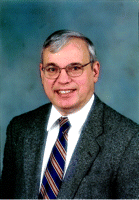
John Parascandola holds a BS degree in chemistry from Brooklyn College and MS (biochemistry) and PhD (history of science) degrees from the University of Wisconsin-Madison. After postdoctoral work at Harvard University, he returned to Madison to join the Wisconsin faculty in history of science and history of pharmacy. In 1983, he became Chief of the History of Medicine Division of the National Library of Medicine. From 1992 until his retirement in 2004, he served as Public Health Service Historian. He is currently working as a historical consultant and teaches a course in the history of modern biology at the University of Maryland Shady Grove campus. He has published extensively on the history of pharmacology.
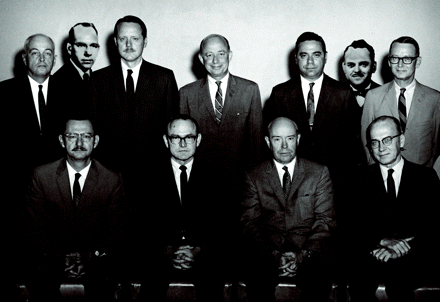
ASPET Council of August 1968 (Minneapolis meeting). [Front row from left: Maynard B. Chenoweth, Treasurer; James A. Bain, President-Elect; Robert M. Featherstone, President; Allan D. Bass, Past-President. Back row from left: Ellsworth B. Cook, first Executive Officer of ASPET; Sydney Ellis (photo collage), Councilor; Parkhurst A. Shore, Councilor; Thomas H. Maren, Secretary; Nicholas J. Giarman, Secretary-Elect; Edward J. Walaszek (photo collage), Councilor; Frederick E. Shideman, Chairman.

April 1954, Atlantic City, NJ, meeting of ASPET members.
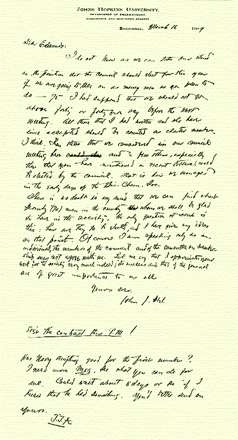
John J. Abel’s letter of 1909 asserts his aspiration to “find seventy (70) men” worthy of ASPET membership in the US. As the founding editor of JPET, he also expressed the need for inaugural manuscripts (“more MSS,” his emphasis).
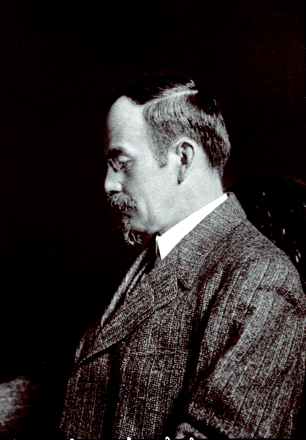
John Jacob Abel (1857–1938), founder and first president of ASPET.

